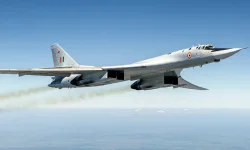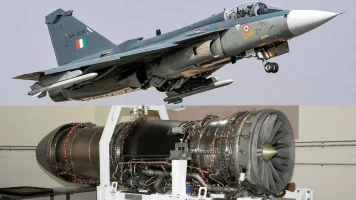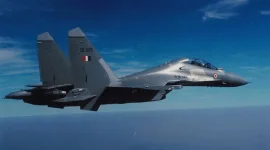- Views: 2K
- Replies: 11
India's national auditor, the Comptroller and Auditor General (CAG), has issued a sharply critical report concerning Hindustan Aeronautics Limited's (HAL) management of its Rotary Unmanned Aerial Vehicle (RUAV-200) project.
The audit reveals significant shortcomings in how the program was planned and carried out, leading to wasted funds and missed opportunities in the crucial defence drone market.
The recent CAG report focused on Project 3 (Rotary UAV Development) highlights a key failure: HAL initiated the project without first conducting a thorough study of market demand or potential user requirements. This oversight resulted in the development of a drone that did not meet the operational needs of the defence forces and consequently failed to attract any orders.
The project incurred a financial impairment cost of ₹9.54 crore, and the CAG noted a lack of analysis on lessons learned, hindering future UAV development. The auditor has strongly recommended major reforms at HAL to ensure future drone projects are viable, meet user needs, and align with defence acquisition strategies.
Launched in 2015 with a budget of ₹23.18 crore, the RUAV-200 initiative was meant to produce a technology demonstrator for a rotary-wing drone. The goal was to establish HAL's expertise in the expanding field of unmanned aerial vehicles (UAVs), envisioning future roles in surveillance and intelligence gathering for India's defence sector.
However, the CAG audit concludes that HAL started this ambitious project without a solid grasp of what the market or the defence forces actually required, setting the stage for its eventual failure.
Upon completion, the RUAV-200 drone significantly underperformed against practical operational standards. It offered a minimal payload capacity of only 2.5 kg, could stay airborne for just one hour, and had a limited operational range of 8–10 km.
These specifications made it unsuitable for most modern defence applications, which typically demand UAVs capable of much longer flight times (often 4-12 hours or more), carrying heavier payloads (for advanced sensors), and operating over far greater distances (50-100 km or more).
Consequently, the RUAV-200 could not compete with established platforms like the DRDO's Rustom series or imported Israeli drones already used by Indian forces.
As a direct outcome of these limitations, HAL was unable to secure any orders for the RUAV-200 from the defence sector, despite the significant ₹23.18 crore investment. This lack of interest resulted in a write-down of ₹9.54 crore, marking a substantial financial loss.
The CAG report stressed that this failure not only wasted public funds but also negatively impacted HAL's standing as a developer of unmanned systems, a critical area where India aims to achieve greater self-reliance ('Atmanirbhar Bharat').
The audit identified fundamental flaws in HAL's process. A primary error was the decision to proceed without undertaking a detailed market survey. Such research would have clarified the specific needs of the Indian Armed Forces and the capabilities of competing UAVs. By not engaging potential users like the Army, Navy, or Air Force beforehand, HAL developed a product ill-suited to their requirements.
Another critical mistake highlighted was HAL's failure to compile a formal "Lessons Learned Report" after the project ended. Such reviews are standard industry practice, helping organisations understand what went right or wrong and improve future work. The absence of this analysis means HAL missed an opportunity to learn from the RUAV-200 experience and refine its approach to subsequent UAV projects, potentially leading to repeated inefficiencies.
In response to these findings, the CAG has proposed several corrective measures. A key recommendation is for HAL to establish a dedicated Market Research and Demand Forecasting Division. This unit would be responsible for evaluating buyer interest and market trends before significant investments are made in new technology demonstrators, ensuring projects are aligned with real-world demand.
The CAG also advised that future HAL pilot projects should align closely with established defence acquisition plans, such as the Army's Long-Term Integrated Perspective Plan (LTIPP) or the Air Force's Technology Perspective and Capability Roadmap (TPCR). This would ensure developed products meet predefined military needs, like the known requirement for tactical UAVs with better endurance for border surveillance.
To further reduce financial risk, the audit suggests HAL should seek Letters of Intent (LoIs) from potential buyers before committing substantial resources to UAV development. Securing such commitments would confirm market interest and encourage collaboration with end-users during the design phase.
Finally, the CAG emphasised the need for mandatory post-project evaluations for all UAV programs, including the creation of comprehensive "Lessons Learned Reports." Institutionalising this practice would allow HAL to systematically build knowledge, improve project planning, and avoid repeating costly errors in the future development of unmanned aerial systems.





